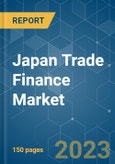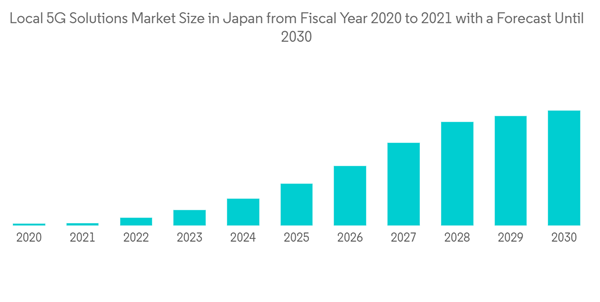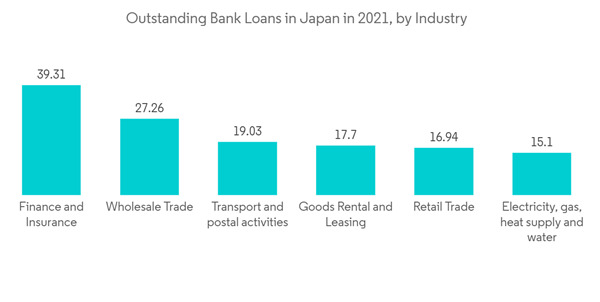When referring to trade financing, the phrases import finance and export finance are interchangeable. By acquiring the capital needed to buy inventory and goods, trade finance helps businesses expand. Any business' success depends on its ability to effectively manage its cash and working capital. Trade finance is a tool used to add additional financing options based on a company's trade cycles or release cash from current stock or receivables. By minimizing payment lags in your trade cycle, a trade finance facility may enable you to provide more favorable terms to both suppliers and customers. Relationships throughout the supply chain benefit, as does the expansion.
Both imports and exports of products have been impacted by the COVID-19 epidemic in Japan. The stay-at-home order reduces shopping options, which lowers demand on the supply side. A further reduction in aggregate demand may have resulted from the decline in sales brought on by workplace closures. The consumption of goods and imports declines as a result of these reductions. COVID-19, on the other hand, raises demand for foods, pharmaceuticals, and items for personal protection like masks and sanitary supplies. Additionally, it has raised the demand for goods related to teleworking and stay-at-home jobs (e.g., laptop computers). On the export front, business operations are halted by workplace closures, which causes production activities to be put on hold. The implementation of infection control measures (such as social distance) in factories has also decreased productivity. These elements cause production output to decline, which lowers exports.
Decision-makers try to figure out the best approach to use different financial tools to stem various methods for accelerating growth and lowering risks when market dynamics affect supply and demand curves.
Japan Trade Finance Market Trends
Digitization is Boosting the Market
Technology will continue to support a large portion of Japan's growth rejuvenation. Giving digitization top priority across the economy can boost productivity, boost income in already-existing enterprises, and create completely new company prospects. Artificial intelligence (AI), for instance, can boost accessibility for senior customers in the finance sector and unleash operational efficiencies in the mobility and construction industries. Supply chain operations may be enhanced via blockchain. Additionally, technology and satellite data can boost decades-old methods' efficiency in more traditional industries like agriculture, forestry, and fisheries.The development of 5G infrastructure as well as 6G technology research and development for industrial applications will be crucial. The Japanese government has created a Digital Agency to promote digitalization throughout the government and public sector to support its digitization ambitions.
By putting their digital changes into practice, banks can serve as role models for how to speed up the nation's digitalization aspirations. Additionally, to supplement the numerous governmental support programs aimed at SME digitization, they can acquire digital capabilities relevant to priority industries and offer loans to SMEs for digitization purposes.
Banks in the Service Providers Segment is Driving the Market
In Japan, banks have traditionally had a unique function that extends beyond financial and economic considerations to include societal service. As Japan sets out on its journey toward future development, this dual mission will conceivably become more crucial.Japanese banks currently play the traditional duties of a lender, wealth creator and guardian, trading partner, and facilitator of capital markets. In the years leading up to 2030, these jobs will change by the government's plan, and banks can become more involved in two additional positions: ecosystem orchestrator and policy advisor. Particularly since the banking law revision in November 2021, certain Japanese banks are already making strides in these areas - for instance, by introducing healthcare-related services and increasing assistance for SMEs.
Banks will contribute to making conducting business in Japan easier as the country seeks to expand domestic and international trade between now and 2030. Distributed ledger technology (DLT), such as blockchain, has drawn the majority of attention in this field because it promises to be more effective at facilitating commerce, supply chain finance, and immediate payments. Japanese banks can learn from other international banks, which now provide transaction banking services through a variety of technology-driven solutions, as they invest in technology to make things simpler for consumers.
Japan Trade Finance Market Competitor Analysis
The study gives a general overview of the trade financing market's competition and gives a quick rundown of recent merger and acquisition transactions. It comprises corporate profiles of a few trade finance and trade technology companies in the industry, in addition to banks. The major players include Wells Fargo, Standard Chartered, Morgan Stanley, etc.Additional Benefits:
- The market estimate (ME) sheet in Excel format
- 3 months of analyst support
Table of Contents
Companies Mentioned (Partial List)
A selection of companies mentioned in this report includes, but is not limited to:
- Wells Fargo
- Morgan Stanley
- Sumitomo Mitsui Banking Corporation
- Standard Chartered
- Mizuho Financial Group
- Royal Bank Of Scotland Plc
- Bank Of America
- Mitsubishi UFJ Financial Group, Inc.
- BNP Paribas
- Asian Development Bank










